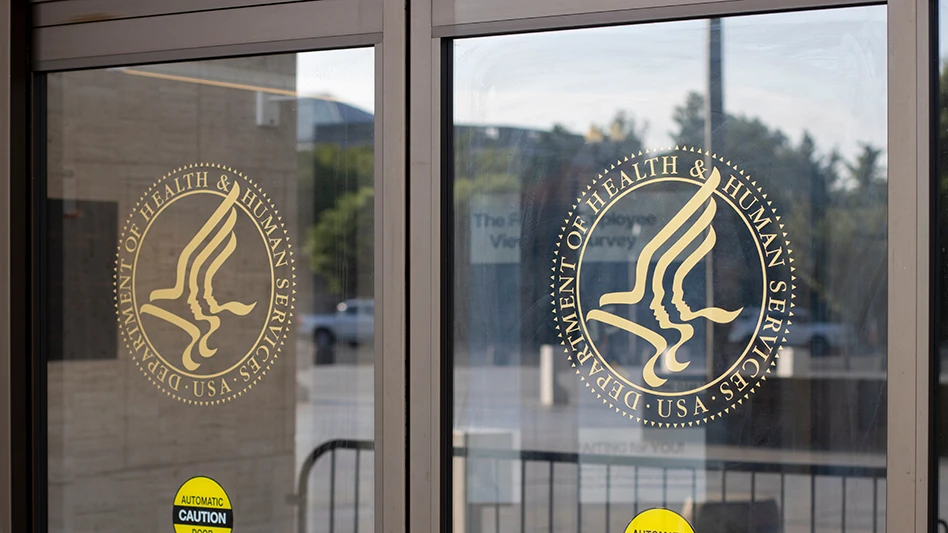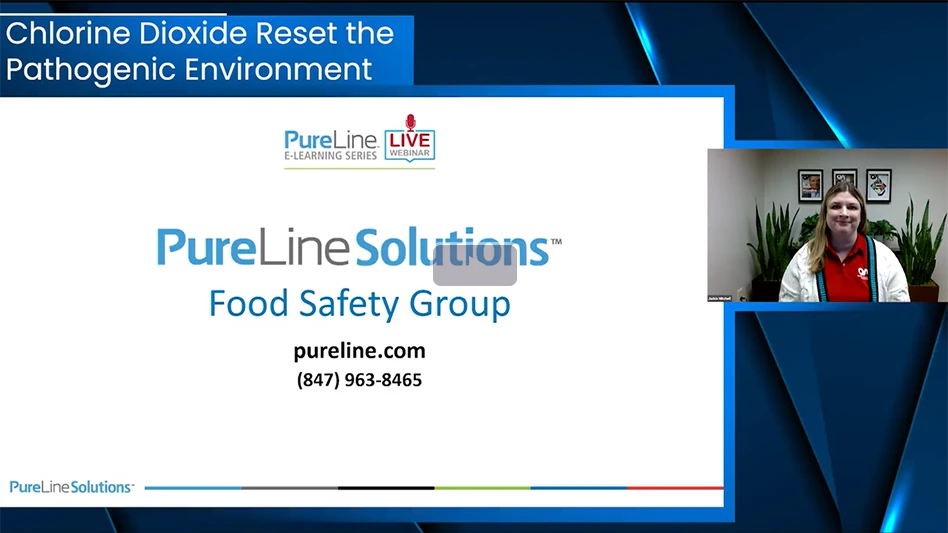Creamed coconut: While held for sale after shipment, the articles were adulterated in that the storage containers had been gnawed through by rodents and were surrounded by rodent excreta pellets; spot testing later confirmed that the articles contained rodent excreta pellets, rodent urine, and rodent hair. The adulterated articles were destroyed, while salvageable food was reconditioned.
Meat and poultry: A joint inspection by FDA and USDA resulted in a sweeping indictment of three executives of a company that operates cold storage food warehouses. The five-count indictment charged the executives with the federal crime of storing more than 22 million pounds of adulterated meat, poultry and other food products in unsanitary, rodent-infested conditions. This was one of the largest amounts of rodent-adulterated food products ever found to be held in storage in the U.S.
French bread crumbs: While held for sale after shipment, the articles were adulterated in that they consisted in part of a filthy substance, namely rodent urine, rodent nesting material and rodent hair, and because they were rodent gnawed. The adulterated articles were destroyed, while salvageable food was reconditioned.
— compiled from FDA reports
Warehoused product containing rodent hair, evidence of staining or gnawing of packaging, droppings on the production floor — all are in violation of food safety regulations and can cause seizure of product, initiation of recall proceedings or shutdown of the plant. And all have a significant probability of occurrence if a plant is not taking action toward prevention.
“If you are receiving one million somethings coming through the doors, statistics say something is going to come in as a Trojan horse,” said Robert Corrigan, president of RMC Consulting, Richmond, Ind., and author of Rodent Control: A Practical Guide for Pest Management Professionals.
FOCUS ON PREVENTION. Instead of waiting for that to happen, plants should focus on prevention, Corrigan said, citing William J. Mayo’s famous quote, “That which can be foreseen can be prevented.” But too often, he said, plants don’t want to spend the money on prevention.
When Corrigan advises that plants institute random inspection of 20 percent of their incoming goods, he said, managers often will respond, “We’d love that and it’s great, but that means we have to pay someone.” If they get a complaint, they’ll do it, they add, but if they don’t, they’d prefer to not spend money on prevention.
It only takes a reference to the video exposure of rats in a New York City KFC/Taco Bell to make plants realize that costs of reaction are much higher than for prevention. “Your reputation is at stake here,” Corrigan said.
While some consumers may realize that a situation in a single store does not necessarily represent the environments of all stores in the chain, its restaurants and related suppliers now must take major steps in prevention. Any exposure like that establishes an association between the restaurant and rats, so that the company cannot afford to have another rat in any store, he said.
“The risks are so extremely high from a financial perspective. And having rodent activity also leads to an increased risk of health concerns,” said Ron Harrison, Orkin’s director of training. “If you find a rodent dropping on the floor, you’re closed. So it’s pretty serious.
“Now that we know how serious it is, what should we do?” Harrison asked.
While maintaining a pest-free environment requires an ongoing integrated program of inspection, prevention and elimination incorporating the services of a licensed technician, both Harrison and Corrigan said prevention through rodent exclusion requires two key elements:
- preventing rodents from being brought in with deliveries; and
- preventing rodents from finding ways in through the structure.
DELIVERIES. The biggest issue with pest problems in deliveries is that shipments are constantly being brought into food processing plants without first being inspected, Harrison said. And it is not simply food products that need to be scrutinized; he has seen deliveries of boxes brought into plants with mice shrink-wrapped within the palletized boxes.
“I recommend you start with the truck,” he said. If there are mice or rats in the shipment, you will see evidence of it in the truck, he explained. And if you do, all product from that load should be quarantined or rejected to ensure that rodents are not brought into the plant.
Corrigan further recommends that a plant implement something he calls the 20 percent practice. “It doesn’t have to be anything analytical,” he said. Rather, through random selection, pick 20 percent of your deliveries for further inspection. Pull the delivery items into a separate area then examine each for signs of rodent presence:
- holes gnawed into boxes;
- urine stains on the cardboard; and
- existence of rodent hairs or droppings.
If anything is found, he said, it should be collected and tested for verification.
Stephen Kells, assistant professor of entomology at the University of Minnesota, said plants also should have a traceback program in place. If rodent evidence is found at delivery, or even later in the warehouse area, a system should exist to enable traceback of the delivery to the infestation source, whether it’s a truck, or in a more urban setting, an adjacent building or unit.
STRUCTURE. The key to structural prevention is, Harrison said, “pest proofing the building so that there is no avenue for them to find a way in.”
One area cited by both Harrison and Corrigan as one that plants often miss is the roof. “A lot of people never go to the roof unless there’s a problem,” Corrigan said.
As their name implies, Harrison said, it’s not uncommon for roof rats to come in through the roof. However mice will also enter through roofs, and with 60 percent of all rodent problems involving mice, it is critical to inspect all potential entry points.
To inspect your facilities for potential rodent entry:
- Inspect all incoming lines. “Let your eye follow the line. Wherever it penetrates the building, it has to be properly sealed,” Corrigan said. Look for shrinkage around utility pipes, worn door sweeps and structural damage.
- Look for light coming in under doors. If you wait for your pest control provider to make his periodic call, find a hole and report it to you, then write up a work order to get it fixed, you could be letting a number of rodents into your building. “All you have to do is walk around your plant looking for light leaks and generate a work order,” Corrigan said.
- Don’t focus only on doors, but don’t try to focus on everything at the same time. Instead, Corrigan said, “Do your doors; then go back around the same rounds and do your linear penetration — walls, ceiling, floor.”
- Use binoculars on the exterior. Check the fascia, note any bird roosting, look for roof penetrations.
- Find the attractant. Rodents are coming into your building because they are being attracted to something inside — food, odor, warmth or light. Because rats and mice tend to follow objects, they will run along the outside of your building. When they feel a temperature change or smell an odor, they will dart inside, Harrison said. Although you cannot eliminate all emanations, you can incorporate pest-proofing techniques to help ensure that rodents running along don’t detect an attractant, and, Harrison said, “to prevent the possibility of them sneaking in.”
CHANGING TIMES. While certain aspects of rodent management are unlikely to ever change — such as the preventive techniques noted above — the thinking behind these programs is beginning to change as various consumer groups seek “green,” environmentally friendly or animal-friendly options which reduce the use of rodenticides and reactive killing, and focus instead on expert consultation and inspection for prevention.
For example, Harrison said, “We have a lot of folks that are worried about the animals — the rats themselves and the mice.” They want to see more humane methods for killing — and only when necessary.
As such, plants and their pest management providers will need to define their own ethics and morals in relation to these animals, understand and communicate with those seeking change, and do so while maintaining food-safe, sanitary environments.
We will need to look at how we keep pests in their place, Harrison said. Most are valuable in their natural environment, but we can’t have them in our foods and human environments. QA
The author is staff editor of QA magazine.
It's a Bird, It's a Plane, It's a ... Rodent
Mice
- can squeeze through openings of 1/4 inch.
- can travel at a speed of 12 feet per second, and long jump up to two feet.
- are excellent climbers, and are able to scale roughened walls as well as pipes, wires or ropes.
- often enter food plants and warehouses through the roof.
- can jump more than 14 inches high and fall from heights of eight feet without injury.
- can survive in cold storage of 14° F, if they have a nest.
- reproduce an average of five to six young per litter, totaling up to 60 offspring in a year.
Rats
- can gain entrance through openings of about 1/2 inch.
- are not fast runners, but are excellent climbers.
- can go straight up or down almost as fast as they can run.
- have been shown to be able to fall almost 200 feet without injury.
- can clear heights of four feet with a running start.
- are capable swimmers, thus may enter buildings through the sewer system.
- can reproduce up to 22 pups in a litter and up to 12 litters per year.
Economic Significance
- One-fifth to one-third of the world’s food supply is lost to rodent damage or consumption.
- Rodent gnawing and burrowing can seriously damage structures, equipment, furniture, utilities and vehicles.
- Their urine can be a major cause of allergic rhinitis and asthma.
- Rodents can transmit plague, murine typhus, leptospirosis, salmonellosis, hantavirus, trichinosis and rabies.
Source: Mallis Handbook of Pest Control

Explore the October 2008 Issue
Check out more from this issue and find your next story to read.
Latest from Quality Assurance & Food Safety
- Kim Heiman Elected to Second Term as President of Wisconsin Cheese Makers Association
- FAO Launches $150 Million Plan to Restore Ukrainian Agricultural Production
- Pet Food Company Implements Weavix Radio System for Manufacturing Communication
- Penn State Offers Short Course on Food Safety and Sanitation for Manufacturers
- USDA Announces New Presidential Appointments
- FDA to Phase Out Petroleum-Based Synthetic Dyes in Food
- IFT DC Section to Host Food Policy Event Featuring FDA, USDA Leaders
- CSQ Invites Public Comments on Improved Cannabis Safety, Quality Standards





